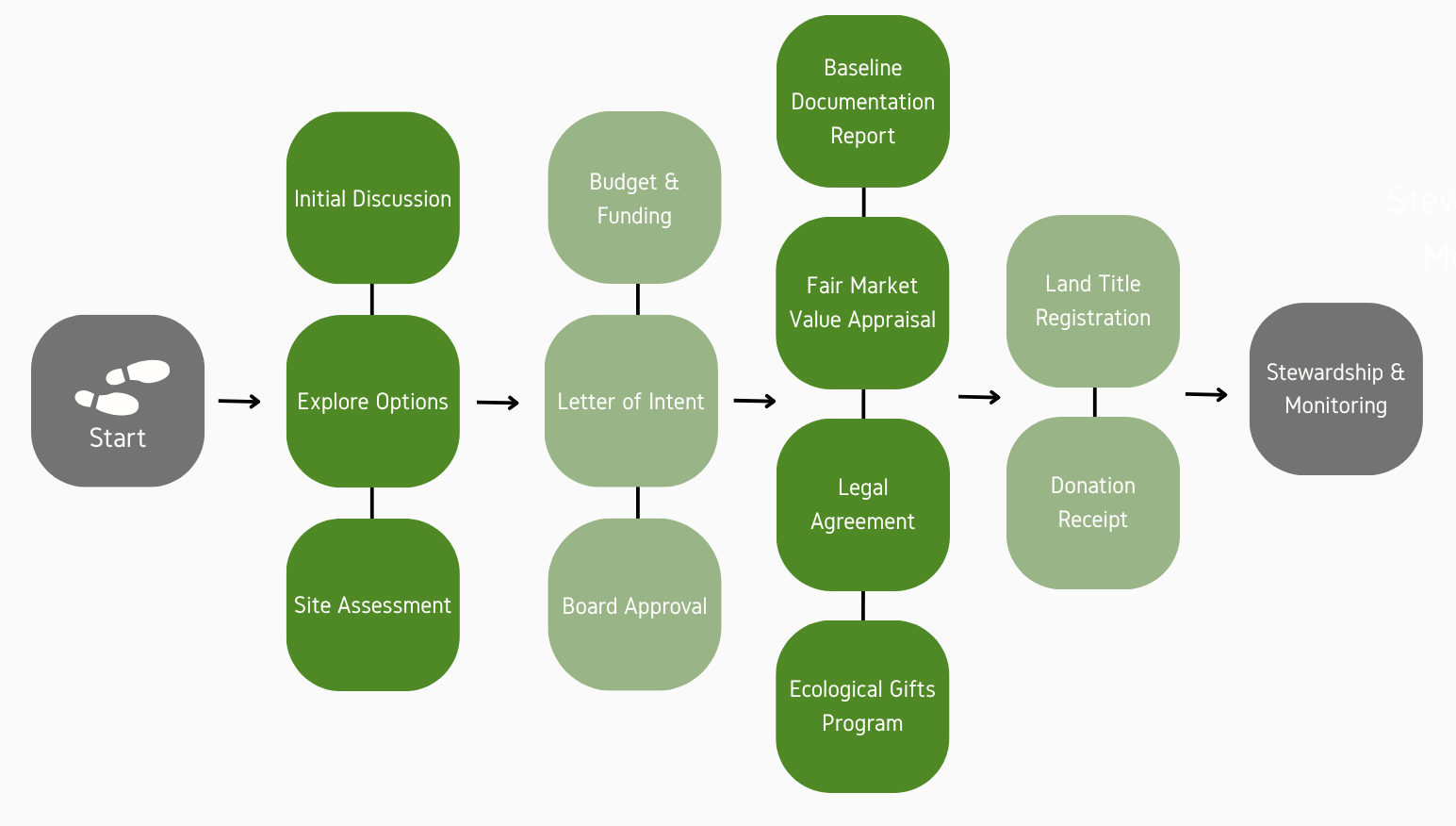Regional Conservation Plan
EALT’s Regional Conservation Plan outlines:
why we conserve nature
the global to local context for conservation
planning and protected area targets
how we prioritize lands for conservation
the tools we use to work with landowners
Goals and strategies in the Regional Conservation Plan stem from EALT’s Strategic Plan.
Planning Your Conservation Legacy
We partner with landowners who care deeply about their land and want the assurance that it will be protected for generations to come. We monitor and steward the lands entrusted to us, safeguarding their ecological values in perpetuity.
By conserving your land with the Edmonton and Area Land Trust (EALT), you can find peace of mind knowing that the land you love will be protected forever.
This guide walks you through the steps to conserving your land with EALT.
Land Title Donation
A land donation is a meaningful way to conserve your property for generations to come. There are three ways to donate your land to EALT:
Fee Simple Donation - You transfer full ownership of your land to EALT. We become the legal landowner and are responsible for long-term stewardship.
Life Interest - You donate your land to EALT while retaining the right to use or live on it for a specified period of time.
Bequest - You arrange a future donation of your land through your will.
Conservation Easement Donation
A conservation easement is a legal tool that allows you to protect the natural features on your land, while still retaining ownership. By entering into a conservation easement agreement with EALT, you voluntarily give up certain rights or opportunities, such as the ability to subdivide or develop, in order to protect natural features on your land. The conservation easement is registered on title and EALT holds an interest in the land.
You continue to own and use your land, subject to the agreed-upon restrictions. You are free to sell, gift, or will your property, and all future landowners must honour the terms of the conservation easement.
Ecological Gifts Program
Canada’s Ecological Gifts Program offers tax incentives to landowners who choose to conserve their ecologically sensitive land. Certified ecological gifts receive favourable income tax treatment, including the elimination of capital gains tax and a 10 year carry-forward period for claiming the donation.
To be eligible, your land must meet national and provincial criteria and typically contain a high portion of native or uncultivated vegetation, riparian areas, wetlands, or other significant natural features. Eligibility is determined by Environment and Climate Change Canada.
Stewardship & Monitoring
For a land donation, once the land transfer is complete, EALT is the legal landowner and takes on the responsibility of caring for the land you’ve entrusted to us. EALT will create a Conservation Management Plan that outlines goals for habitat, access, infrastructure, and long-term stewardship. We will identify short and long-term priorities, and we will carry out non-critical work as funding allows. Our dedicated team of volunteers will help EALT steward and take care of the land.
For a conservation easement donation, you continue to enjoy and use your land, honouring the terms of the conservation easement. EALT will schedule regular monitoring visits with you, typically once a year. During these visits, we will walk your land, review the easement with you, and compare current conditions to the original Baseline Documentation Report.
We always welcome you to contact us if you have questions about whether a new activity fits within the terms of the easement. If your land changes ownership, we will continue monitoring with new landowners to ensure its protection continues.




